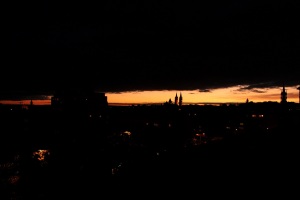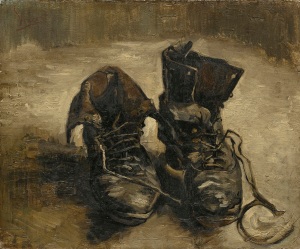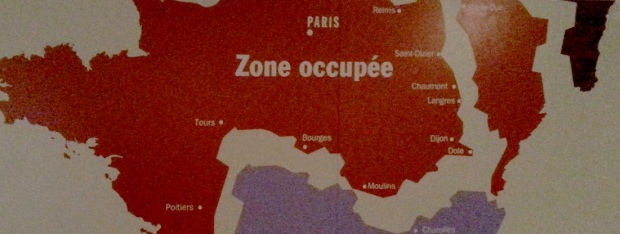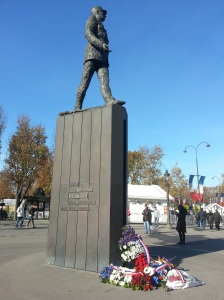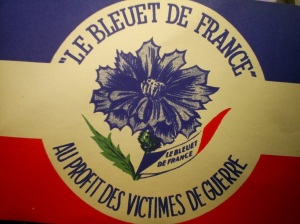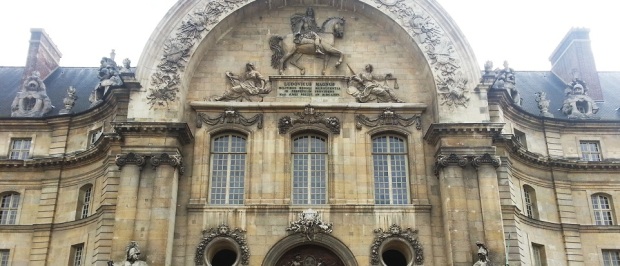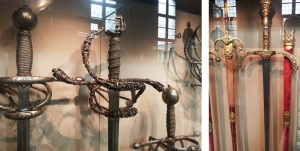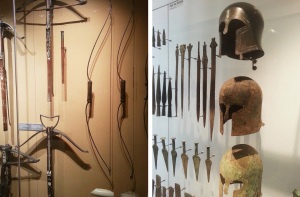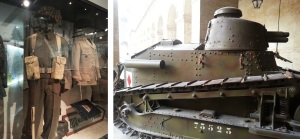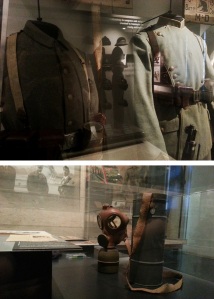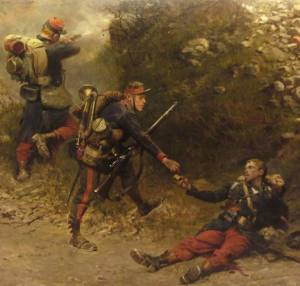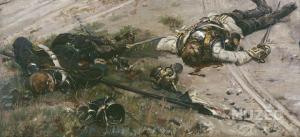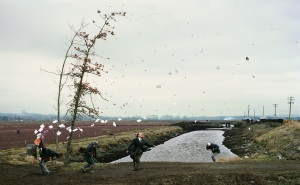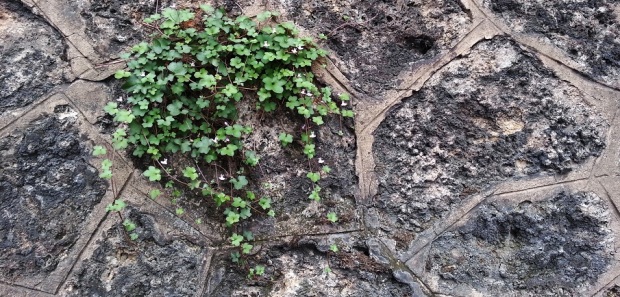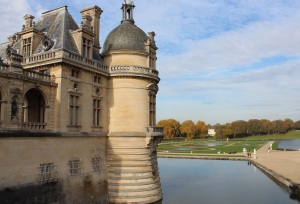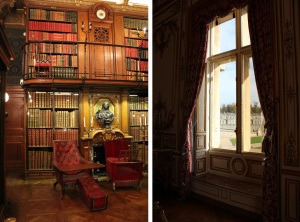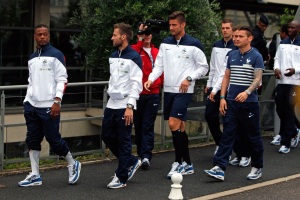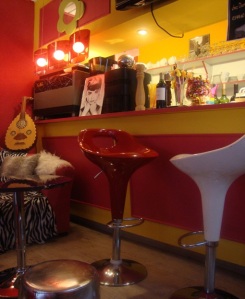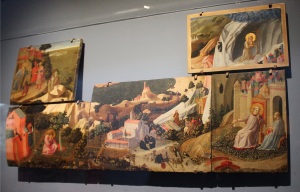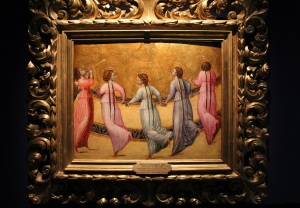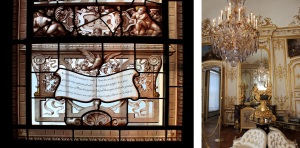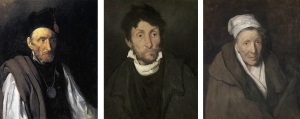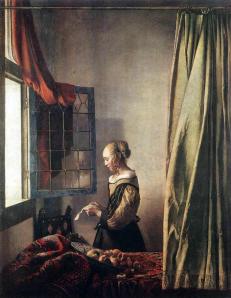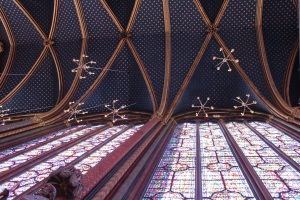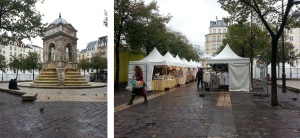When you have to catch an early train, it’s only natural that bar next door gets rented for some crazy hootenanny and the dj pumps music all night. What’s worse is the French love for disco and trying to sleep while they’re belting out showtunes or somesuch. That being said, waking up early enough to catch our train was aided by my excitement, a feeling reserved for trips, birthdays, Christmas and the the last day of school. I have become quite blasé about the latter three so I hope travelling never gets old. The ride to Caen is about two hours. Having not seen my S.O. basically at all during the week, the train ride went by all too fast, talking and joking the whole way, laughing so hard I had tears welling up and all my strength employed to avoid orangina shooting out my nose.
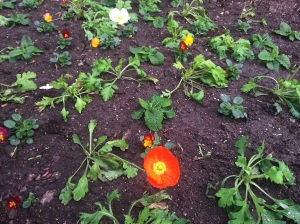
We are the Dead. Short days ago we lived, felt dawn, saw sunset glow
Arriving at the station, we managed to figure out how to buy bus tickets to Courseulles-sur-mer despite the language barrier and not being able to find the station door. We had some time to kill after so we walked around downtown Caen, ending up at a église st-jean, complete with crazy modern stained glass and courtyard with late-blooming poppies. Back on the bus, which was more like a coach, we had a nice lolling sojourn through the northern countryside. It’s not uncommon to pass a world war cemetery in almost every town, neatly kept with straight rows of brilliant white crosses. The town themselves are pretty small and the houses almost exclusively stone with terracotta or slate roofing. The towns maintain a quiet old-world charm and of course, there is the perpetual church steeple poking out at rapid intervals.
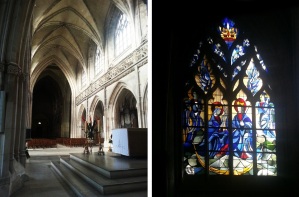
“here is the church, here is the steeple”
We slowly made our way into Courseulles-sur-mer, getting off at ‘Place de 6 juin’ the date, of course, of D-Day. The square is the very centre of town, where the pier, boardwalk, each access, carrousel and town monument meet. There is a croix de lorraine just across the quay to commemorate the return of Charles de Gaulle to France 14 June, 1944. We arrived at high tide, the brisk and salty sea air greeting us with pleasant acquaintance.

At the centre of the square is a Canadian Sherman tank, pulled from the frigid waters of ‘Juno’ beach some 25 years after it sank during the commencement of operation Overlord. It was of course cleaned and restored, now adorned with the insignia of the troops that fought and died here including the Royal Winnipeg Rifles, Regina Rifle Regiment, Queen’s Own Rifles of Canada, and North Shore (New Brunswick) Regiment. The tank itself is now enveloped in a pillow of flowers, often red and white organized into the Canadian flag. Also placed nearby is a German Kwk 39 anti-tank gun with obvious signs of battle damage, also restored.
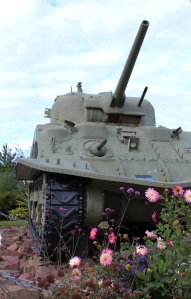
For it’s early in the morning and I’m far, far away.
Making our way to the Juno beach centre, we waited for the swing bridge to let some sailboats in and we checked out the catch of the day, at the plethora of stalls erected right beside the fishing boats docked in the river. Arriving at the centre you can hear the waves crashing along the shore, the gentle breeze rustling the long grasses. The landscape has long since returned to tranquility, though the centre acts as a reminder to us the events of the war.
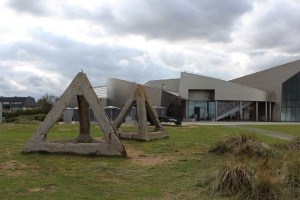
Juno Beach Centre
The tour begins with footage of the landing and an audio representation of that the soldiers would have heard preparing to land on the beach, the sound of the sea spraying over the boat, heavy artillery exploding and rumbling nearby.. the tour encourages you to also learn about Canada’s fragile military and economy predating the war to further appreciate the difficulty lying ahead.
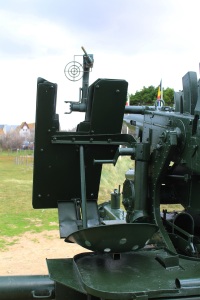
The centre of the tour had a trove of information about the different ships, tanks, aircraft, formations, payload, propaganda, home front and war effort from a Canadian perspective. It was absolutely fascinating to discover the attack and defence strategies, and certain difficulties unique to north america such as trans-atlantic transportation of supplies and how to diminish u-boat damage. Also, that Canada went from having basically no air force to the 4th largest during wartimes. We also attended an emotional video giving an in depth detailing of the Juno beach events.
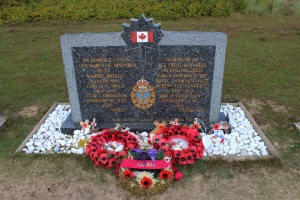
The final room was a relievingly lighthearted Canada factoids room for those not acquainted with our culture. There was a great amount of hockey gear and curling rocks, let me tell you. It was my great pleasure to encounter other Canadians accessing the tour. You can easily pick them out because if they want to get by you while you’re looking at something they linger first trying to wait for you to finish what you’re doing, then slip by you giving ample berth while saying “sorry”. There were also a lot of toques.

the shepherd will tend his sheep, the valley will bloom again
We also attended a tour of two recently excavated German bunkers. The first was built early in the occupation so it was not built as a defensive post but to aid in the organization of potential invasion of England to the north. The structure was built using French labourers and whatever materials they had on hand, some parts brick, some concrete, even railway ties for beams. It is speculated that the French tried to sabotage the building by placing the cinder blocks on their sides so the walls would have hollow pockets. The walls also had wood interlaced for hanging up maps and fixtures.We also visited a bunker built much later in the war, at a time when German occupation of France was shakier and they were preparing heavy defensive fortifications.
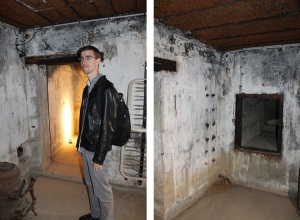
escape hatch
This bunker by contrast is solid cement, with two heavy metal doors that double as a gas proof chamber, a gun slit facing the only entrance and 365 degree parascope. Our guide told us that it was expected of soldiers to do 36 hour shifts in the bunker so there were also fold down beds and a small stove for comfort. The bunker walls are 3 metres solid concrete and the only emergency exit was a small tunnel filled in with sand, so if you were trapped at least you could start digging your way out. Apparently in allied training it was instilled that if you see a grate or opening into a building that you should throw in a grenade to clear the room before entering. Once the Germans caught on to this practice their bunkers, as this one did, had false grates installed that lobbed the grenade back out at the intruder. It was also equipped with a gun nest, each pointed on angles across to beach to create crossfire.
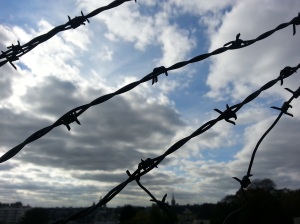
In 1944 the bunker was right on the water and locals can remember as children jumping off the parascope into the sea, but nowadays the beach has shifted greatly and there is now a barrier of sand in front of the bunkers so you have to use your imagination a bit to picture how the beach looked way back then. We finished our tour on the shore where we got to see the buoy indicating the shoreline at low tide, which is much farther out. Upon deployment, the entire beach was riddled with anti tank and anti personnel mines some 5 ft apart, blockades, razor wire creating what was dubbed a “devil’s garden”.
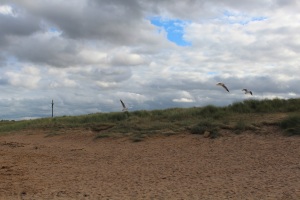
Just before deployment there was heavy bombardment to reduce the German numbers by an estimated 60% though in effect only reached 5-15 % depending on the area. Despite the odds, the fortifications on the beach were overcome and the troops moved inland to liberate Courseulles-sur-mer. The Canadian troops lost 356 men, 574 wounded and 47 taken prisoner, though the losses were lower than estimated from the devastation of its predecessor mission operation Jubilee in Dieppe. Despite the difficulties and objective failures Juno beach alongside Utah is considered to be the most strategically successful of the D-Day landings. Walking the sands where such a critical and painful battle was fought is truly a moving experience. The land is now so beautiful and the town so gentle and quiet it is hard to imagine what it was like, which is why I personally believe it’s important to keep listening to the stories and remember the sacrifices made.
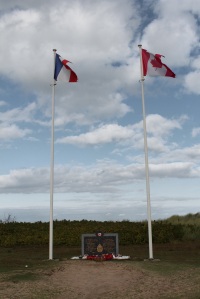
We made our way around town to to our rented room. We decided to try out airbnb for the first time. We got a private room with key in an old converted garage with facilities shared with the homeowner. Our host was very nice and accommodating. I did my best to speak French and we understood most of what the other was trying to say. Airbnb is of course much less expensive than a hotel which suits us just fine. That being said any money we saved on the room we probably promptly spent at the most hit-or-miss restaurant I believe I’ve ever been to.
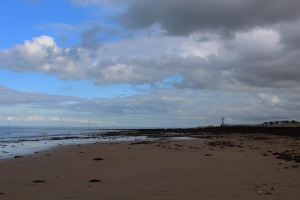
We decided since we were “on vacation” that weekend we would live a little, by which I mean order a drink with dinner. Big spenders! We both got the house cocktail which turned out to be cheap champagne spiked with curacao and a generous profit-margin of juice topped with a stale candy and sugar rim. It has got to be one of the worst drinks I’ve ever had. Next came the complimentary bread. It’s basically expected to get free bread with your meal here, and being France the bread is always fresh and delicious. So when I tell you that the bread was so stale that no pigeon would eat if you can see why we started to become suspicious of this place. Next came the complimentary appetisers brought out to us by the chef. Maybe the chef should spend more time cooking and less time schmoozing because the only thing the app was good for was a raised eyebrow and hearty laugh. I think they were supposed to be maki.. I think. Being by the sea didn’t help this dish any. I think it contained rice that was made three years ago that they found behind the radiator. Or it might have been tiny pebbles, I’m not sure. If you go to pick up your app and it crumbles into a pile of dust you know something is wrong.
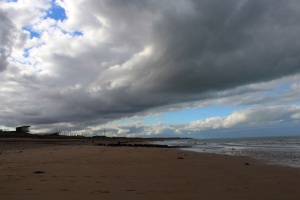
However, next came the oysters. Thankfully all they had to do was open them for me to enjoy a wonderfully delicious treat fresh from the sea. SO had some kindof yummy bouillabaisse. It was stewier than most but he seemed to like it. Our main was some kind of tiny braised fish on a bed of lentils, which were quite yummy. The fish was decent. For dessert? Bread pudding. Now I’ll give them a break because it’s not a french dish. That being said, they’re only a stone’s throw from England and also bread pudding is easy, who can’t make that? They took a slice of old bread, presumably the same stuff they served before dinner and instead of soaking it in cream to make it soppy and delicious they kindof.. toasted it? Then drizzled cream on top? I’m not quite sure what was happening there but the tiny after dinner mints were good. Here’s a tip to enjoying a shitty restaurant : a) don’t read the bill too closely cause you’ll just get mad b) make fun of everything relentlessly.
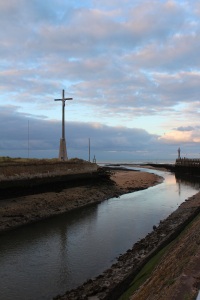
croix de lorraine
Anyway, late in the day the tide was going out and the inlets had become rapids. We strolled along the now widened beach to tiptoe thru the seaweed and find cool shells. We wandered home and settled in for a good night’s sleep, lulled by the patter of rain that amazingly decided to be nice and hold off until we were tucked in.
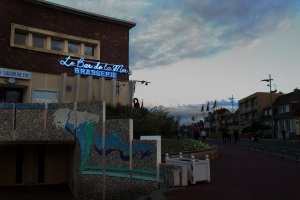
Our host was still asleep when we left early, trying to get a leg up on our journey back to Paris. The bus took us on the reversed journey, this time the cities quieter and more cars at the church parking lots. Arriving at Caen we stopped first for pain au raisin before heading up to the Chateau de Caen. The Chateau is an 11th century fortification buit by William the Conqueror. It saw several engagements during the Hundred Year’s war, and the keep pulled down during the French revolution. It was also used as a barracks during WWII and was heavily bombed at that time. It is one of the largest castles in western Europe.

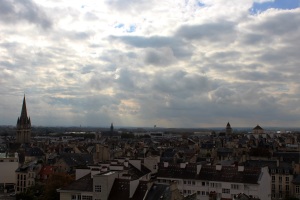
Caen
It now houses two museums and a church, and you can see the ruins of other structures such as the keep, William’s residence, ramparts and curtain walls, and the two fortified doors. There is still ongoing work to excavate the bottom of the walls and more ruins are still being uncovered. The walls are incredibly high and you can peer thru the bow slits into what would have been a moat, though these days just grass. The stone stairs heading up the ramparts and towers are so worn from literally a century of use they are very curved.

super neat.
It’s a huge area which was great fun to explore. The art gallery at the top houses a nice collection from many eras in French history, which matches beautifully with the lineage of the castle. Afterwards, we strolled around town, the majority of stores being closed but lounging in parks and cafés is not a bad way to spend your afternoon. We finished off the day at a nice restaurant in an old area of town on rue du vaugueux ie) beggars row.
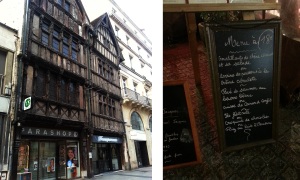
It’s a small and narrow pedestrian street with old shifting houses, once known for squalor and crime. It also once housed a bar owned by Edith Piaf’s grandparents, and the woman who murdered Marat. It now houses a number of nice restaurants while maintaining the enclosed medieval structures. We had some nice wine, confit du canard, terrine de poissons, croustillants de chèvre chaud and ile flottante which is a whipped meringue cake soaked in thin caramel sauce. I really need to learn to make this back home! Before having to catch our train back we made sure to watch the sun set behind the glimmering houses from the parapet.
